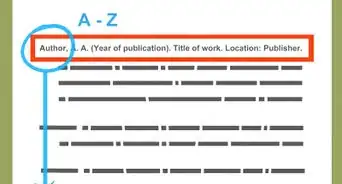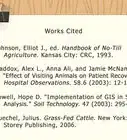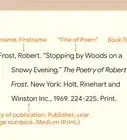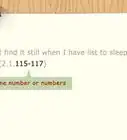This article was co-authored by Christopher Taylor, PhD. Christopher Taylor is an Adjunct Assistant Professor of English at Austin Community College in Texas. He received his PhD in English Literature and Medieval Studies from the University of Texas at Austin in 2014.
This article has been viewed 377,522 times.
You might need to use Modern Language Association (MLA) style guidelines if you're writing a paper for your middle, high school, or college-level class. You may also be a graduate student or researcher who uses MLA citations all the time! If you're writing a paper about movies, or you want to include a movie in a research paper on some other topic, you'll need to cite it properly. Making a correctly formatted Works Cited and adding in-text citations to your essays shows your audience that you're not plagiarizing.
Steps
Citation Templates
Making the Works Cited
-
1Start with the title of the film in italics. Type out the name of the movie and put it in italics. Follow the title with a period. This is how you'll start almost all citations for films.[1]
- For now, your citation should just look like: “Notting Hill.”
- If the title is a translation, include the original title in brackets. For example, “The Chorus [Les Choristes].”
-
2Record the director next. After you've cited the title, type “Dir.” to abbreviate “director.” Then add the name of the director, listing their first name first and last name second. Put periods after “Dir” and the director's full name.[2]
- Your citation should now look something like this: “Notting Hill. Dir. Roger Michell.”
Advertisement -
3Start with directors' names if you're focused on them. If you're writing a paper comparing multiple directors, or you're more concerned with the director than the film, start your citation with them. The director's last name goes first in this case, followed by a comma, their first name, and another comma. Then type “dir.” and end with a period. [3]
- These citations look like this: “Michell, Roger, dir. Notting Hill.”
-
4Include performers' names if they're important to your paper. After the title and director, add the names of the main performers if you're going to discuss them in your paper. Type “Perf.” and then list the actors in order of billing (the order in which they appear in movie credits), first name first, last name second. Separate names with commas, and end the list with a period.
- The citation should now look like: “Notting Hill. Dir. Roger Michell. Perf. Julia Roberts, Hugh Grant, and Richard McCabe.”
- If your paper is about a particular actor, you can begin the citation with their name. This formatting looks like this: “Roberts, Julia, perf. Notting Hill. Dir. Roger Michell.”
-
5Add the distributor of the film. Next, you need to add the name of the distributor, or the company that released the film. You also need the release date. Type the distributor's name followed by a comma, and then type out the movie's release date.[4]
- Almost there! Your citation should now look something like this: “Notting Hill. Dir. Roger Michell. Perf. Julia Roberts, Hugh Grant, and Richard McCabe. Universal Pictures, 1999.”
-
6Specify which format you used to watch the movie. Type out whether you watched the film on VHS, DVD, or Blu-Ray. End with a period.[5]
- If you watched the film online, you can skip to step 8.
- For VHS, type out “videocassette” in your citation. It'll look like this: “Notting Hill. Dir. Roger Michell. Perf. Julia Roberts, Hugh Grant, and Richard McCabe. Universal Pictures, 1999. Videocassette.”
- If you watched the movie at the theater, you can just type out “Film” for a complete citation! It'll look like this: “Notting Hill. Dir. Roger Michell. Perf. Julia Roberts, Hugh Grant, and Richard McCabe. Universal Pictures, 1999. Film.”
-
7Include both the original and format release dates. If the format you're using was released later than the actual movie, you need to cite both dates. This will switch up your order of elements a bit. After your list of performers (or the director), type out the original release date and then add a period. Next, type the distributor, a comma, the format release date, and a period. End with the format type.[6]
- If you watched Notting Hill on Blu-Ray, for example, your citation will look like this: “Notting Hill. Dir. Roger Michell. Perf. Julia Roberts, Hugh Grant, and Richard McCabe. 1999. Universal Pictures, 2013. Blu-Ray.”
-
8Add the website and date you watched for online movies. If you watched the movie online, you'll need to add some other information. After the release date, specify which online platform you used to watch the movie. Put it in italics. Then type out “Web.” Finally, write the date you watched the movie, starting with the day, then the month, then the year. Separate each of these components with periods.
- This citation will look something like this: “Notting Hill. Dir. Roger Michell. Perf. Julia Roberts, Hugh Grant, and Richard McCabe. Universal Pictures, 1999. Netflix. Web. 18 July 2017.”
-
9Organize the list in alphabetical order. Check the first letter of each citation in your Works Cited. List them in alphabetical order, going from A to Z. Indent the second lines of all of your citations 0.5 in. (1.27 cm), as well as any subsequent lines.[7]
- Your Works Cited should be on a separate page at the end of the paper, and it should be titled Works Cited. You don't need to put quotation marks around the words Works Cited, or italicize them.
- Make the whole document double-spaced, but don't add extra spaces between citations.
Doing In Text Citations
-
1Put the title of the film in parentheses if you're focused on the film. If you're talking about the entire film and you're not focused on the director or a performer, all you need is the title of the movie. Italicize it and put in parentheses at the end of the sentence where you've discussed it. Put the period after the second parenthesis.
- For example, “Notting Hill is a perfect illustration of a typical late 1990s rom-com (Notting Hill).”
-
2Put the director's last name in parentheses if you're focused on them. When you're talking about the director, you'll need to add their last name. You should still include the title in italics as well.[8]
- “Michell went for a personal touch in his directing for this film (Michell, Notting Hill).”
-
3Use a performer's last name if you're focused on them. You might also choose to write about an individual actor. In this case, include the actor's last name, followed by the title of the film in italics.
- So, for example, “Roberts's classic wide smile made appearances throughout the movie (Roberts, Notting Hill).”
-
4Add a timestamp if you're citing a specific time in the movie. If you're writing about a particular scene or segment in the movie, it's a great idea to include a timestamp. This acts like your page numbers for readers.[9]
- Add the timestamp like this: “Roberts lays her heart out on the floor in front of Grant at the end of the film (Roberts, Notting Hill, 02:01:33-02:03:10).”
-
5Put the citation after the reference and before a period. Your in-text citation should be part of the sentence where you're referencing the film. Always make sure that the period comes after the second parenthesis.[10]
Expert Q&A
Did you know you can get expert answers for this article?
Unlock expert answers by supporting wikiHow
-
QuestionHow do you MLA cite a person?
 Christopher Taylor, PhDChristopher Taylor is an Adjunct Assistant Professor of English at Austin Community College in Texas. He received his PhD in English Literature and Medieval Studies from the University of Texas at Austin in 2014.
Christopher Taylor, PhDChristopher Taylor is an Adjunct Assistant Professor of English at Austin Community College in Texas. He received his PhD in English Literature and Medieval Studies from the University of Texas at Austin in 2014.
English Professor
-
QuestionHow do you MLA cite a PDF?
 Christopher Taylor, PhDChristopher Taylor is an Adjunct Assistant Professor of English at Austin Community College in Texas. He received his PhD in English Literature and Medieval Studies from the University of Texas at Austin in 2014.
Christopher Taylor, PhDChristopher Taylor is an Adjunct Assistant Professor of English at Austin Community College in Texas. He received his PhD in English Literature and Medieval Studies from the University of Texas at Austin in 2014.
English Professor
-
QuestionHow do you cite a television show in MLA?
 Christopher Taylor, PhDChristopher Taylor is an Adjunct Assistant Professor of English at Austin Community College in Texas. He received his PhD in English Literature and Medieval Studies from the University of Texas at Austin in 2014.
Christopher Taylor, PhDChristopher Taylor is an Adjunct Assistant Professor of English at Austin Community College in Texas. He received his PhD in English Literature and Medieval Studies from the University of Texas at Austin in 2014.
English Professor To cite a television show, include the following information (in order): name of episode (in quotation marks), name of show (in italics), name of network, call letters of the television station and city (with a comma in between), date of broadcast (day, abbreviated month, year), and publication medium (i.e. television, radio, etc.). Punctuate your citation with periods after the name of the episode, the name of the network, the city, the date of broadcast, and the medium.
To cite a television show, include the following information (in order): name of episode (in quotation marks), name of show (in italics), name of network, call letters of the television station and city (with a comma in between), date of broadcast (day, abbreviated month, year), and publication medium (i.e. television, radio, etc.). Punctuate your citation with periods after the name of the episode, the name of the network, the city, the date of broadcast, and the medium.
References
- ↑ https://www.american.edu/library/documents/upload/Film-Video-Citation-Guide.pdf
- ↑ https://www.american.edu/library/documents/upload/Film-Video-Citation-Guide.pdf
- ↑ https://www.american.edu/library/documents/upload/Film-Video-Citation-Guide.pdf
- ↑ https://www.american.edu/library/documents/upload/Film-Video-Citation-Guide.pdf
- ↑ https://www.american.edu/library/documents/upload/Film-Video-Citation-Guide.pdf
- ↑ https://www.american.edu/library/documents/upload/Film-Video-Citation-Guide.pdf
- ↑ https://owl.english.purdue.edu/owl/resource/747/05/
- ↑ https://www.american.edu/library/documents/upload/Film-Video-Citation-Guide.pdf
- ↑ http://libguides.bates.edu/mla
About This Article
Citing a movie using Modern Language Association style is relatively simple once you know how. If you’re discussing the movie in general, write the title in italics and parenthesis at the end of the sentence when you mention it. If you’re discussing a director or actor in the movie, include their surname in the parenthesis before the title. If you’re referencing a specific shot, you should also include a timestamp at the end. In your works cited section, start with the title in italics, then write “Dir.” followed by the director’s full name. Then, include any relevant actors by writing “perf.” followed by their names. After that, write the movie’s distributor, like Universal Pictures, and the release date. Finally, write the format you watched the movie in, like VHS, DVD, or Netflix. If you saw it in the cinema, write “film” instead. For more tips from our Educational co-author, including how to organize your works cited list, read on!
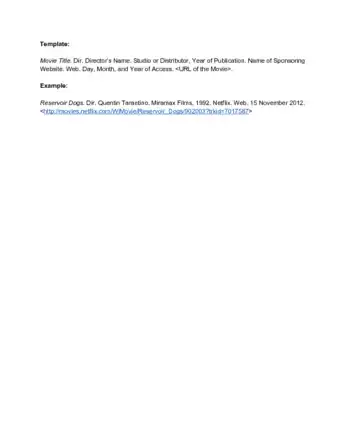

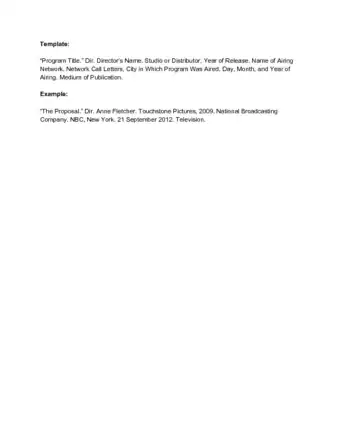
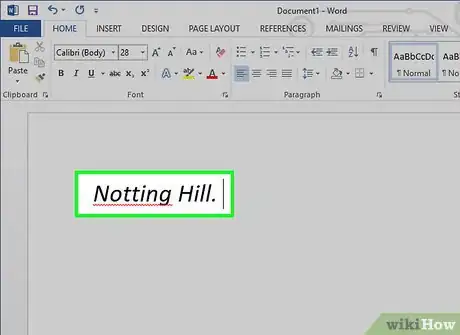



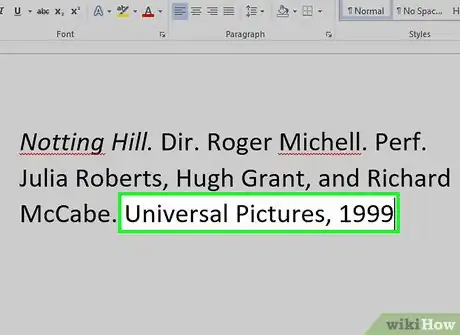
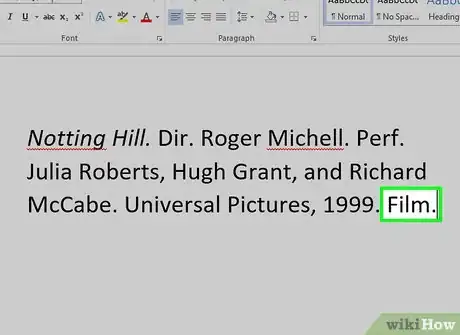

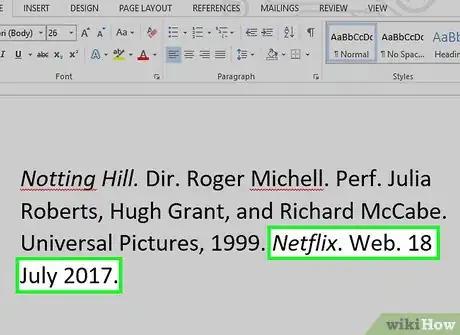
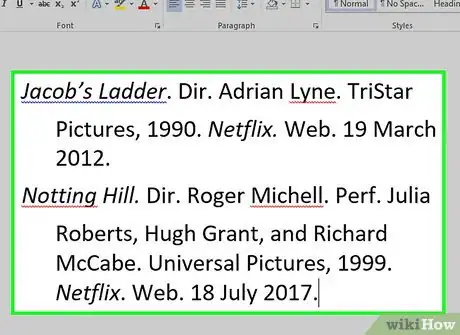
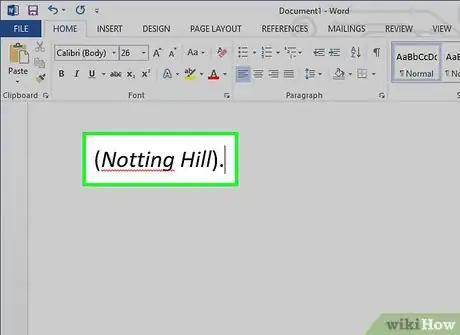




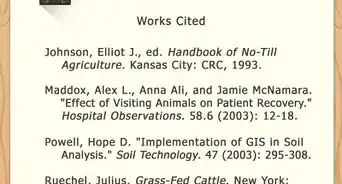








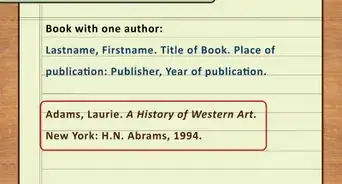

-Step-18.webp)

